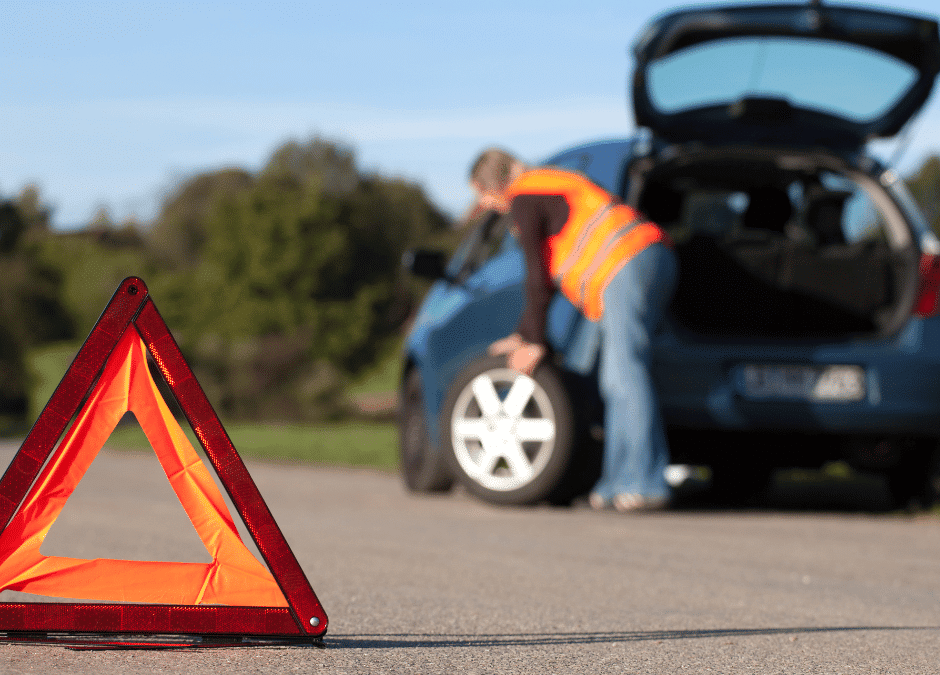Flat Tire? Here’s How to Change It Safely on the Road
A flat tire is more than just an inconvenience; it’s a disruption that can happen at the most unexpected times, turning a routine drive into a stressful ordeal. At Locust Grove Towing, we understand the complexities and risks involved in this seemingly simple task. Through this guide, we aim to provide you with detailed instructions and helpful tips to change a tire safely and efficiently, ensuring your roadside emergency doesn’t turn into a crisis.
Understanding the Risks: Why Safety is Crucial
Changing a tire on the roadside is an activity laden with risks. You’re exposed to oncoming traffic, and there’s always the danger of mishandling tools under stress. Being aware of these risks is essential. It’s not just about fixing the tire; it’s about ensuring your safety throughout the process. Understanding these hazards and preparing you to deal with them is important, emphasizing the need for a cautious and informed approach to this common roadside challenge.
Preparation: Tools You Need for a Tire Change
Being caught unprepared with a flat tire can turn a minor issue into a major problem. Essential tools for this task include a reliable jack, a sturdy lug wrench, and a well-maintained spare tire. These should be standard equipment in your vehicle’s trunk. It is essential to recognize the importance of each tool, how to keep them in good condition, and be aware of additional items that might come in handy during a tire change, ensuring you’re always prepared for this roadside contingency.
Identifying a Safe Location: Where to Pull Over
Choosing the right spot to change a flat tire is as crucial as the change itself. The ideal location is a flat, stable surface, well away from passing traffic and potential hazards. It’s essential to know how to identify such a spot, considering factors like road curvature, traffic flow, and the stability of the ground. Remember, the right location is not just about convenience; it’s critical to ensuring your safety.
Signaling for Safety: Using Hazard Lights and Safety Triangles
Visibility is critical when you’re stopped on the side of the road. As soon as you pull over, it’s vital to turn on your vehicle’s hazard lights. We emphasize using safety triangles or cones, if available, to enhance your visibility to other drivers. By effectively using these signaling devices, you can significantly reduce the risk of accidents and ensure your safety and that of other road users.
Step-by-Step Guide: Changing Your Flat Tire
Changing a flat tire might seem daunting, but with the right approach, it’s a manageable task. Here’s a simplified step-by-step guide to ensure you can handle this situation safely and effectively.
- Find a Safe Spot: Pull over to a safe, flat area away from traffic. Ensure your car is stable and not on an incline or uneven surface to prevent it from tipping during the tire change.
- Turn on Hazard Lights: As soon as you stop, activate your hazard lights to alert other drivers of your presence and increase your safety.
- Apply the Parking Brake and Wheel Wedges: Engage the parking brake to prevent your car from moving. If available, place wheel wedges under the other tires for added stability.
- Remove the Hubcap and Loosen Lug Nuts: If your tire has a hubcap covering the lug nuts, remove it first. Then, using the lug wrench, loosen the lug nuts about half a turn, but do not remove them completely.
- Lift the Vehicle with the Jack: Place the jack under the vehicle at the designated point and lift the car until the flat tire is about six inches off the ground.
- Remove the Flat Tire and Mount Spare Tire: Remove the lug nuts completely, then take off the flat tire. Mount the spare tire onto the lug bolts, push it all the way onto the wheelbase, and hand-tighten the lug nuts.
- Lower the Vehicle and Tighten Lug Nuts: Lower the car back to the ground and tighten the lug nuts with the wrench. Ensure they are secure, but avoid over-tightening.
Common Mistakes to Avoid When Changing a Tire
Even with the right tools and knowledge, making mistakes when changing a tire is easy, especially in a stressful situation. Common pitfalls include improperly positioning the jack, incorrectly tightening the lug nuts, or neglecting safety procedures. It is essential to know how to avoid these common errors and ensure a smooth, safe tire change.
When to Call for Professional Help: Recognizing Difficult Situations
There are situations when attempting to change a tire yourself is not advisable. This could be due to adverse weather conditions, unsafe locations, or simply a lack of confidence in handling the task. It is essential to know when it’s wiser to call for professional assistance. Locust Grove Towing is always ready to provide expert help in such scenarios, ensuring your safety and getting you back on the road swiftly.
Maintaining Your Tires: Prevention Tips
Preventing flat tires begins with regular maintenance. Checking your tire pressure monthly, inspecting for wear and tear, and ensuring they are properly inflated are simple steps that can significantly reduce the likelihood of a flat tire. Knowing these practical tips and routines for tire maintenance helps you avoid unexpected tire issues and prolong the life of your tires.
Contact Us for Flat Tire Change Assistance Services
Changing a tire can be daunting, and sometimes it’s best left to professionals. If you ever find yourself in a situation where you’re uncomfortable or unable to change a tire, don’t hesitate to contact us. Locust Grove Towing offers professional, reliable, and safe tire change assistance services. We prioritize your safety and are dedicated to helping you resolve your flat tire issues with minimal hassle.


Recent Comments